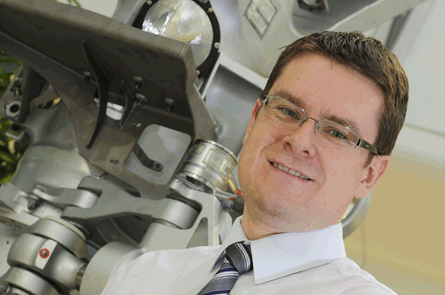The direct graduate entry scheme at the European airframer presented the ideal opportunity for Robert Baskill to launch his career as engineering group leader for the structures analysis team on new-development aircraft
Where and what did you study and how did you come to work for Airbus?
I graduated from the University of Liverpool in 2000 with a degree in aerospace engineering. Then I began looking at engineering and non-engineering graduate opportunities.
I always had an interest in commercial aircraft and had seen the growth of Airbus throughout the 1990s. When I found out about its direct entry graduate scheme and the opportunities it offered to move around the business, I applied and began working here in September 2001.
 |
|---|
© AirbusBaskill: keen to broaden his technical knowledge and experience |
You specialised as a stress engineer on the A400M wing fixed trailing edge team. What led you there?
I wanted to work on one of the new-aircraft design projects. At the time, the A400M was approaching contract launch and engineering support was beginning to be ramped up. It was a good opportunity to join a project in the early stages and see the whole aircraft development cycle in action. There was a smaller team compared with other Airbus projects and so it offered the chance to work on larger and more varied packages.
How was working on the airlifter as it neared first flight?
The time building to first flight of an aircraft is busy and can be pressurised. It's the last opportunity to run through everything to make sure that the analysis reflects the final product and you have to complete it on time to support the flight testing.
But, when you have spent so many years involved with a project, it is great to see the aircraft take off. We watched a live video feed from Seville of the take-off and landing and it's a day I will always remember.
You are now on the A350 XWB programme. Is that different?
At the design team level, the A400M was run in a similar manner to Airbus civil products, so the transfer between projects is not particularly difficult.
The main differences for me are due to moving from the wing design team to the landing gear team. The ways of working both internally and with our suppliers are different.
How does your job divide between pure engineering and team management? Are they different? Do they overlap?
At the moment it is probably a 50/50 split. As a stress lead, you have to spend less time producing the analysis and more time providing your team members with guidance and support. However, you have to be close enough to it to be able to take responsibility for delivering the results.
Tell a young graduate the attractions of work at Airbus
The number of opportunities is a big attraction. You can follow almost any career path that you choose because the company is so big and our activities are so varied. It can be a bit daunting, but there are plenty of people around willing to offer the benefit of their experience.
The opportunity to work on major commercial aircraft projects that are constantly pushing the boundaries of aircraft technology is a major attraction.
How much do you see yourself moving around the organisation, or other EADS divisions?
My aspirations have always been to move into a broader and multi-disciplinary engineering role. So, I'll continue to look for opportunities that broaden my technical knowledge and experience and would consider working on one of the other Airbus sites if the right opportunity arose.
Source: Flight International



















